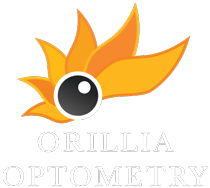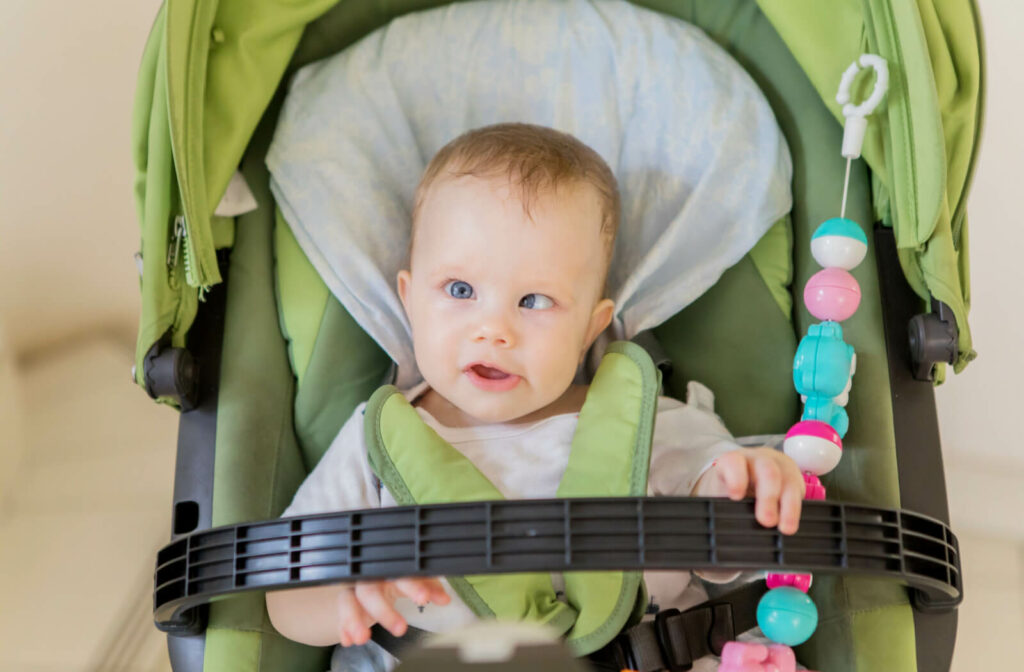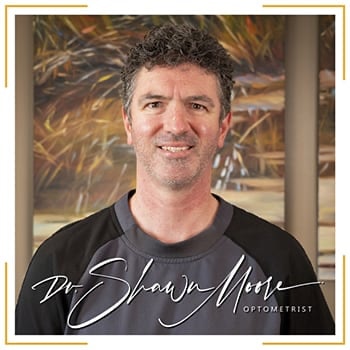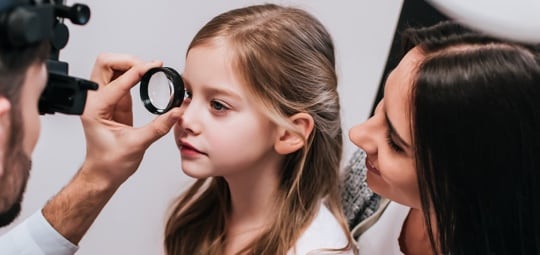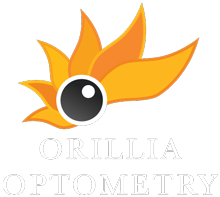Certain eye conditions can occur in babies in the first few months of their life. Crossed eyes (clinically known as strabismus) is a typical condition in newborns.
When looking at your baby, you may notice that one eye looks right at you but the other wanders in a different direction. There’s usually no need for concern, as this condition usually corrects itself around 4 to 6 months.
However, if it continues beyond this age, a children’s eye exam and vision therapy can help diagnose and treat the condition before impacting your child’s visual skill development.
Crossed Eyes
Strabismus is the misalignment of the eyes, which makes them look crossed. This condition is normal in newborns and usually corrects itself as your baby’s eye muscles strengthen. However, older kids can develop crossed eyes, which is usually diagnosed between ages 1 and 4.
You may notice your baby crosses their eyes frequently or only when they’re tired or trying to focus on something too close. These instances fall into different classifications, like:
- Intermittent (occasional) or constant (regular)
- Unilateral (only in one eye)
- Alternating (changes between left and right eye)
There are different types of strabismus:
- Esotropia is when one or both eyes turn inward towards the nose.
- Exotropia is when one or both eyes turn outward towards the ear.
- Hypertropia is when the misaligned eye sits higher than the other eye.
- Hypotropia is when the misaligned eye sits lower than the other eye.
Causes of Crossed Eyes in Babies
Crossed eyes at birth is called congenital strabismus. It can develop during the first few months of life as your baby learns to focus and move the eyes together. The cause of crossed eyes is unknown, but this condition is more likely to develop in babies with:
- A family history of strabismus
- Farsightedness
- Eye muscle problems
- Trauma to the eye
- Brain development that doesn’t support the eye-brain connection
- Nerve problems that affect the transmission of information to the eye muscles
Some babies are at a higher risk of developing crossed eyes, including:
- Babies born prematurely
- Babies with cerebral palsy
- Babies with Down syndrome
- Babies with brain injuries
- Babies with low birth weight babies

Symptoms of Crossed Eyes in Babies
If your baby is older than 4 months, eye misalignment is the first sign of crossed eyes. Other symptoms include:
- Eye(s) that continue to cross
- Eyes that don’t appear to focus together
- Tilting or turning their heads to see
- Frequent squinting or blinking in bright light as they may see double vision.
How Crossed Eyes Are Diagnosed
When you notice signs of a crossed eye in babies after 4 months, it’s best to take them to an eye doctor. According to the Canadian Association of Optometrists, your baby should have its first eye exam between 6 and 9 months. Your optometrist can easily diagnose crossed eyes during a regular eye exam.
How Crossed Eyes in Babies Are Treated
Apart from a cosmetic problem, crossed eyes can affect your baby’s vision. The straighter or more dominant eye has stronger visual acuity, while the misaligned one can remain weak.
Treating crossed eyes early in babies can preserve their vision as they go through the developmental phases, setting them up for success in learning. Without treatment, crossed eyes can lead to amblyopia or lazy eye. We offer treatments based on the severity of your child’s condition.
Mild Crossed Eyes
- Vision therapy can be used to strengthen the weaker eye and promote binocular vision (the use of both eyes together). Other treatments may include eyeglasses, eye patching, or eye drops. The goal of treatment is to strengthen the weaker eye while promoting the use of both eyes.
Severe Crossed Eyes
- If other therapies are not successful, eye muscle surgery is an option that involves tightening or loosening the eye muscles responsible for aligning your eyes. The eye doctor may use adjustable sutures to tweak eye alignment after surgery.
Early Detection for Healthy Vision
It’s natural to be alarmed when you notice your baby’s eyes crossing but remember that the part of their brain that controls eye movements is still developing. Their eyes will usually correct themselves in a few months.
However, if you notice their eyes are still crossing after your baby turns 4 months old, book an appointment with Orillia Optometry. We can offer safe, simple, and noninvasive methods to train your baby’s visual system.
